Digital Dropshipping: How To Start Dropshipping Digital Products?
Dive into the future of business with our easy guide on “digital dropshipping.” Ever dreamed of selling cool stuff like eBooks, music, or courses without dealing with real products or shipping?
I’ve got you covered. Discover how to start, sell, and succeed with products that go straight to your customer’s inbox. No more boxes, no more waiting.
Whether you’re a total newbie or looking to grow, this guide is your shortcut to a business that’s all about making life easier and more exciting. Ready to sell the smart way? Let’s jump in!


Table of Contents
- Key Takeaways
- What is a Digital Product?
- Why Sell Digital Products Online?
- The No. 1 Tool for all dropshippers – now with AI
- Is Dropshipping Digital Products Worth It?
- How To Start Dropshipping Digital Products in 2024?
- Where Can You Dropship Digital Products?
- Best Digital Products To Dropship in 2024
- Real Life Examples Of Dropshipping Digital Products
- Digital Dropshipping FAQs
- Conclusion
Key Takeaways
Here’s what my blog article will teach you:
- Digital dropshipping focuses on selling digital products like eBooks, music, or courses directly to customers’ inboxes, avoiding the need for physical inventory or shipping.
- Benefits of digital products include instant delivery and accessibility, low production costs, and anytime, anywhere access.
- Market predictions show that the dropshipping business is projected to be worth $301.11 billion by 2024. More importantly, Significant growth in digital product sales, with eBooks expected to reach $14.6 billion in sales in the US by 2024.
- Furthermore, if you want to start dropshipping digital products, this guide provides insight about each step you need to take, from choosing a niche to market your digital dropshipping products.
- Recommended platforms for digital dropshipping:
- Gumroad, Sellfy, Etsy, Amazon Kindle Direct Publishing (KDP), and Udemy.
- Best digital products to dropship in 2024:
- eBooks, audiobooks, online courses, video games, plugins and extensions, and graphic design and digital art.
- Success stories:
- Dan’s unique approach led to over $5 million in sales from digital products.
- Madeline earned her first $1,000 on Etsy by overcoming initial doubts.
What is a Digital Product?
A digital product is any item that’s stored, sold, and used in an electronic format. These products are delivered to customers through digital means, such as downloading from a website or streaming online.
Picture this: You buy something, but instead of waiting for a package to arrive, you get it delivered straight to your computer or phone. That’s the magic of digital products!
They’re all about being electronic, think eBooks, online courses, software, your favorite tunes, or even that cool digital art you’ve been eyeing.
The best part? You get them instantly – no waiting around for deliveries. And, they’re super convenient, right? You can access them anytime, anywhere. Plus, making and sending these out costs way less than physical stuff, which is pretty awesome both for creators and us, the users.
So, whenever you’re diving into a new eBook or jamming to some digital tracks, remember, that’s the digital product world for you – all about instant, easy, and on-the-go.
👉 Learn How To Sell On Spotify Today: Step-by-Step Guide + Top Products.
Why Sell Digital Products Online?
Selling digital products online is a smart move for many reasons
So, here’s why I think dropshipping digital products is great:
✅ Low Costs to Get Started
First off, starting costs are super low. You don’t need a physical store or lots of inventory. Create your product once, and sell it over and over without spending extra.
✅ No Shipping Hassles
Next up, say goodbye to shipping. Since everything’s online, you don’t worry about postage or delivery times. Your customers get their products instantly, which they absolutely love.
✅ Make Money While You Sleep
Here’s the best part: earn money 24/7. Your online store works non-stop, so you can make sales even when you’re chilling or asleep. It’s like having a magic money-making machine.
✅ Reach Customers Worldwide
Also, your market is the whole world. The internet has no borders. Someone from the other side of the planet can buy your digital art, courses, or software anytime.
✅ Easy to Update
Another cool thing? Updating is a breeze. If you need to fix something or want to add new features, you can update the digital product and send it out again. Your customers always get the best version.
✅ Unlimited Inventory
Lastly, you never run out of stock. Digital products don’t run out. Whether it’s one sale or a thousand, you’re always ready to deliver without extra effort or cost.
Is Dropshipping Digital Products Worth It?
The dropshipping business is going to get bigger, with predictions saying it will be worth $301.11 billion in 2024 and $372.47 billion in 2025. In addition, it is expected that around $135 billion will be spent on digital products in 2024.
Moreover, the number of online sales for digital items, like eBooks or online courses, has jumped up by nearly 70% in the past two years
In the US, about 3% of what people spent in 2023 was on these digital items. The money made from selling eBooks is expected to reach $14.6 billion in 2024, which is a 3.2% increase from the year before.
Also, the US is likely to earn the most from these sales, bringing in more than $5 billion in 2024. This whole market is predicted to grow a little each year, by 1.62%, and it might be worth over $15 billion by 2027.
How To Start Dropshipping Digital Products in 2024?
Now, I will share with you my approach to dropshipping digital products.
Find or Create Your Digital Dropshipping Products
The first step you need to do is to find the dropshipping niche you are getting into. Thus, what I personally do before diving in is check on product demand over time.
So, I use Google Trends to check for specific product demand. For example, let’s say I want to dropship ebooks, or more specifically “cookbooks”.
So, I will type in the keyword, and check it out.

Furthermore, to get insights about product costs, sales, profit margins, customer engagement, competition, and more, I use product research tools like Minea to get all this information.
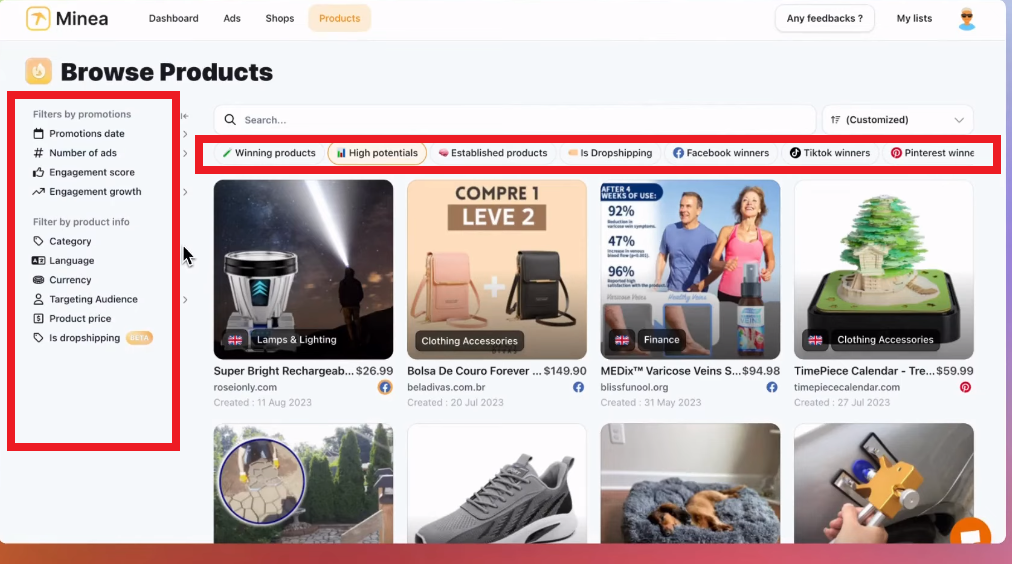
Create Digital Dropshipping Products
On the other hand, if you want to create your digital dropshipping product you will use apps to automate this process.
For example, if you want to sell designs, art, images, etc., you can consider using tools like Adobe Photoshop, or Canva.
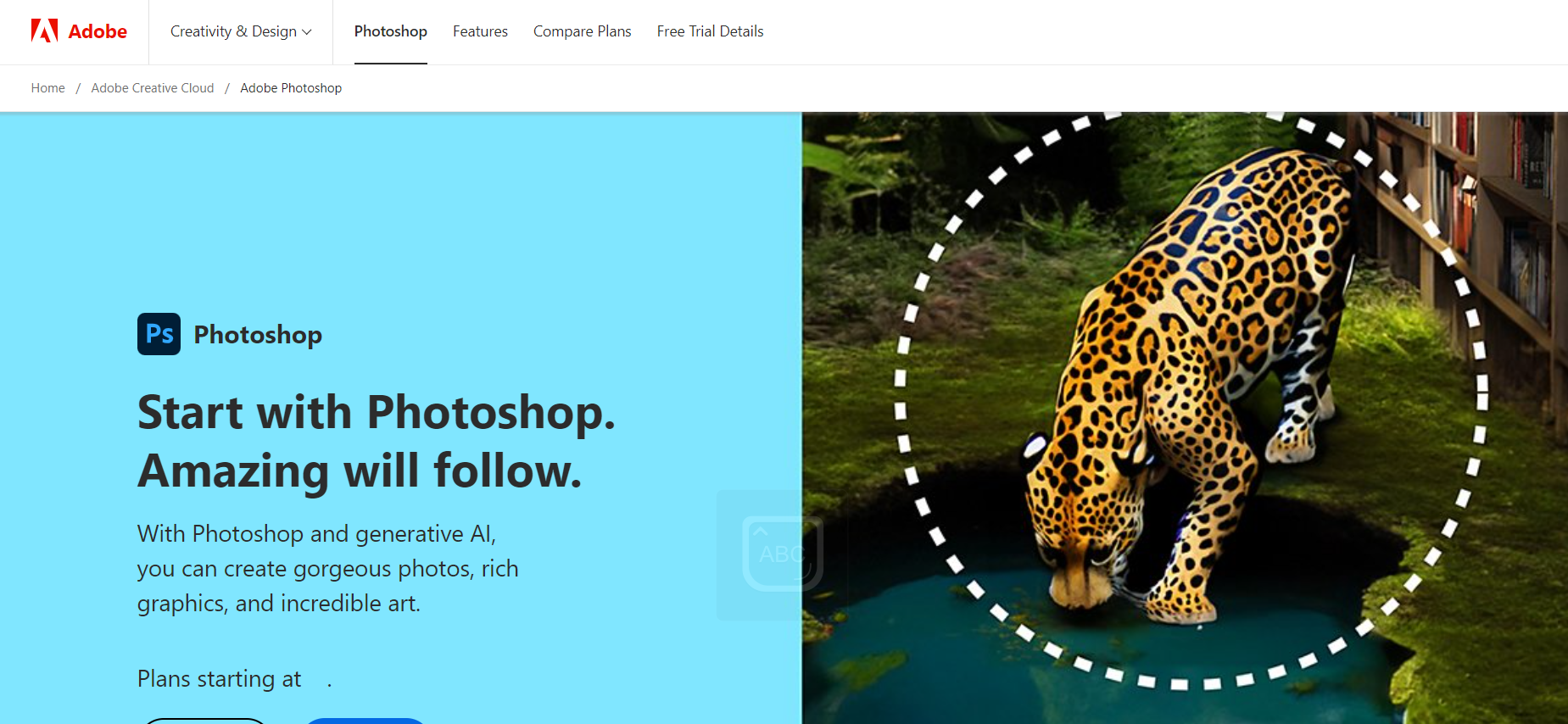
However, if you want to create online courses, for instance, apps like Teachable, or Udemy can help you.
For example, Teachable helps you create and sell online courses. It offers tools for course creation, website building, and student management.
Choose the Right Digital Dropshipping Suppliers
Firstly, finding a good supplier is crucial for your online store’s success. It’s important to pick a supplier who is trustworthy, sells high-quality digital products at fair prices, and delivers quickly to your customers.
For digital products, I turn to the directory at Dropshipping.com, which lists over 2000 dependable suppliers.

This free directory allows me to specifically look for suppliers that match my needs, such as niche, location, and more. Moreover, it provides detailed information on each supplier, including prices, processing times, minimum orders, and product types.
Create Your Digital Products Store
Next, you’ll need an online store to sell your digital products. Website builders are a convenient way to create a visually appealing store with minimal effort.
In my experience, Shopify emerges as the best choice due to its user-friendly nature and vast selection of themes. It allows you to customize your store and seamlessly add products.
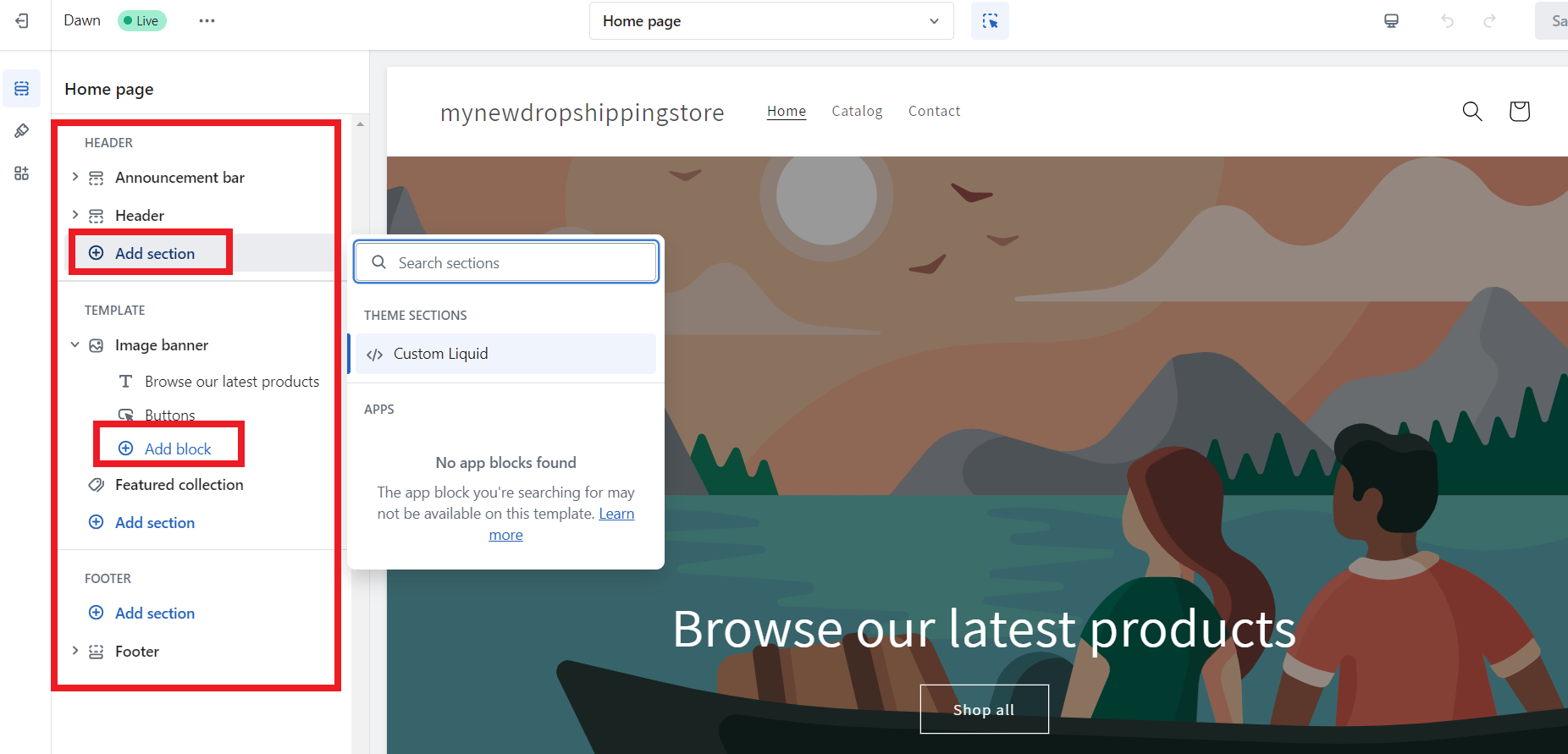
Furthermore, Shopify integrates well with numerous dropshipping apps and tools, simplifying your product management.
💡 Tip: For those starting out, I highly recommend looking into a beginner’s guide to setting up your first Shopify store.
AI Generated Shopify Store
Did you know starting your own Shopify store is super easy? And it starts at just $1.
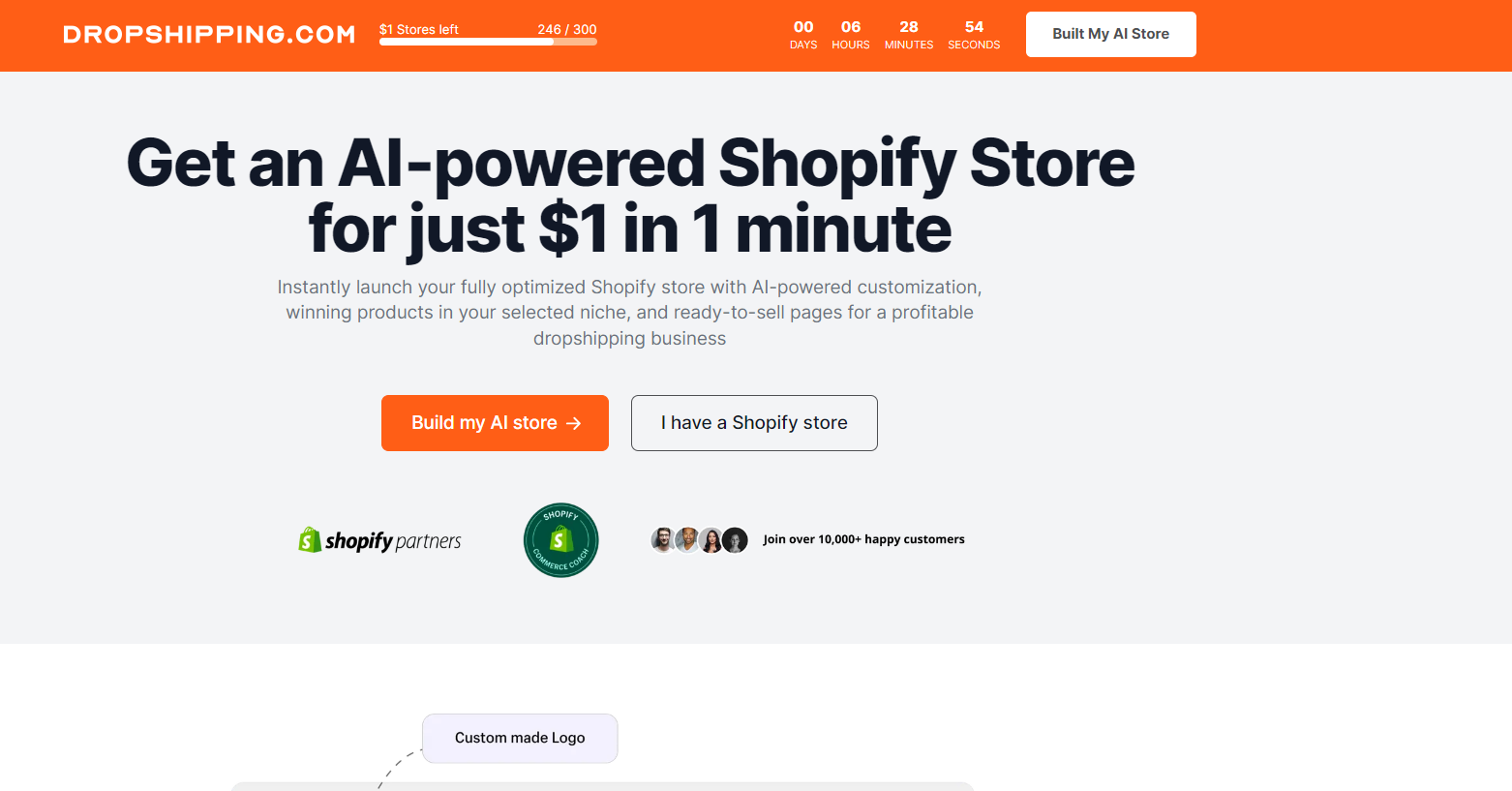
Dropshipping.com can quickly help you launch your Shopify store with the help of AI. This means you get a store stocked with top picks for your chosen niche, ready for you to start earning from dropshipping right away.
They offer easy-to-navigate themes that encourage shoppers to make purchases, and you can customize these themes to match your taste and what you’re selling. Plus, the product pages are designed to boost your sales.
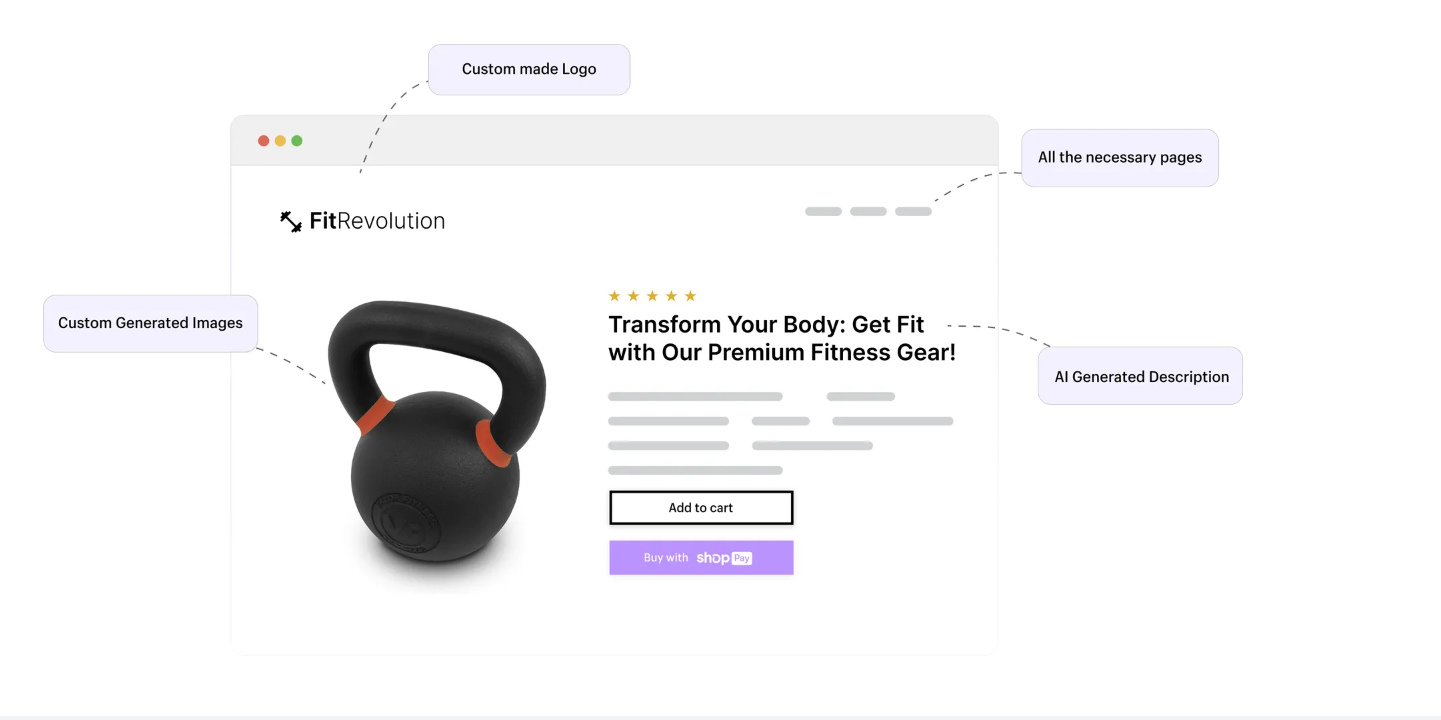
Here’s the simple way to do it:
- Choose your selling niche by selecting from their list.
- Let their AI take over to populate your store with great products and everything else you need.
- Start selling! With your store set up, products chosen, and supplier ready, you’re all set to begin.
Market Your Digital Dropshipping Store
Lastly, marketing is essential to draw customers and make sales. Initiating with SEO, social media advertising, email marketing, and paid promotions can significantly enhance your store’s visibility online.
Platforms such as Facebook, Instagram, and TikTok are excellent for crafting engaging content, running targeted ad campaigns, and interacting with potential customers. These platforms offer comprehensive tools for ad targeting and setting marketing objectives.
Additionally, employing strategies like cross-selling, up-selling, and promotional codes can effectively increase your sales volume. Incorporating video marketing into your strategy can further highlight your products’ features and benefits.
In conclusion, while marketing can substantially boost your sales, remember to also focus on the logistics of selling digital products to ensure smooth operations.
Where Can You Dropship Digital Products?
Gumroad

Gumroad is a versatile platform that’s especially friendly for beginners. It supports a broad spectrum of digital products such as ebooks, online courses, music, and software.
The platform is designed to take care of everything from payments to the delivery of digital goods, making it a convenient choice for creators who prefer a straightforward selling process.
Gumroad charges a percentage of each sale plus a small transaction fee, which means you only pay a 10% flat fee when you make a sale. This setup is ideal for creators looking for a low-barrier entry to the digital marketplace.
Sellfy
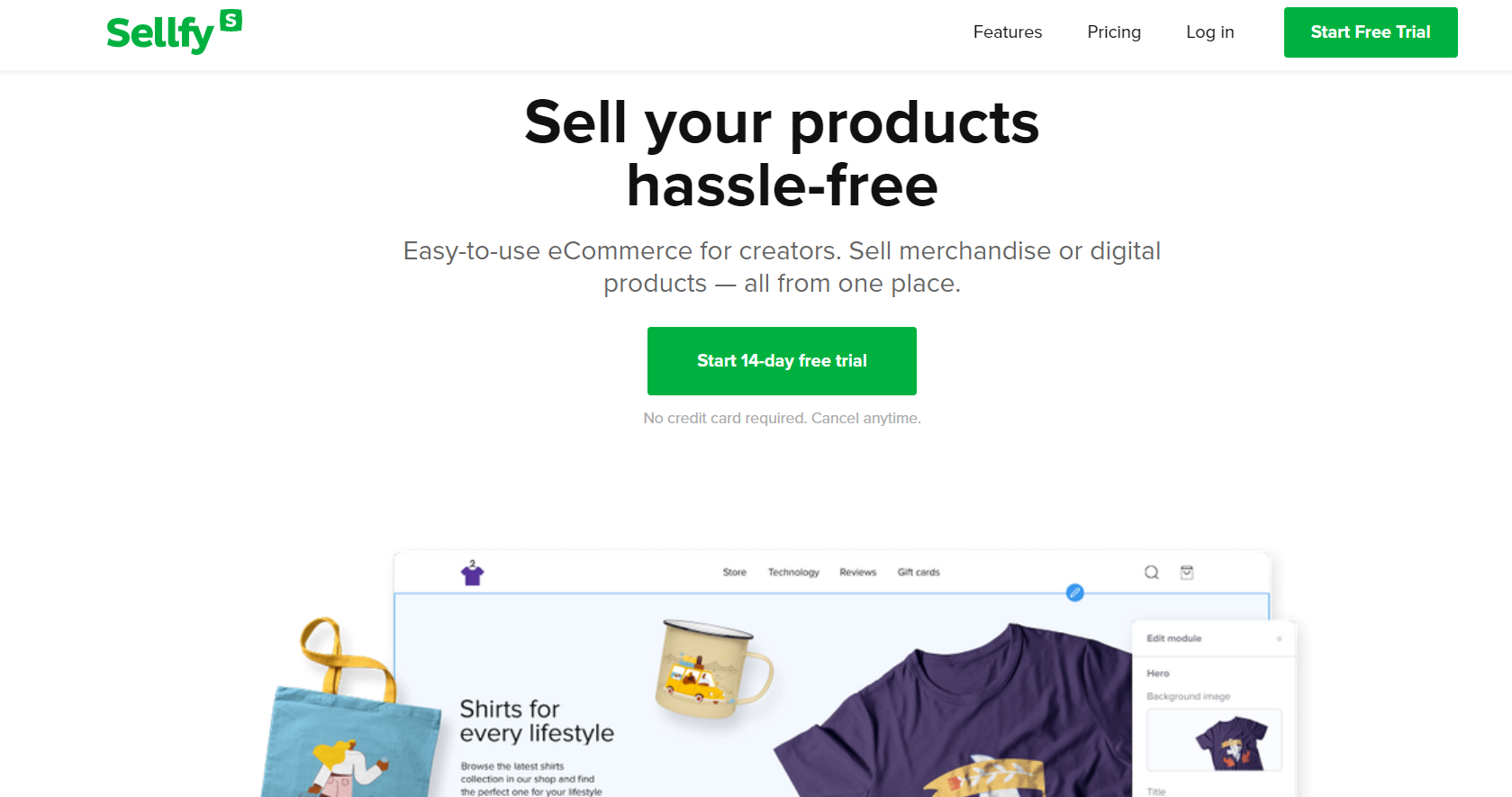
Sellfy provides a simple yet effective storefront for selling ebooks, videos, music, and even physical goods. It stands out for its focus on digital content creators and its ability to handle subscriptions, making it a versatile option for those looking to offer a variety of product types.
Sellfy operates on a subscription model, offering different tiers that cater to the needs of businesses at varying stages of growth.
There are three plans available on Sellfy:
- Starter plan – $29/month;
- Business plan – $79/month;
- Premium plan – $159/month
Each tier offers an increasing array of features, from basic storefront capabilities to advanced analytics and marketing tools.
💡 Tip: Check out my Sellfy Review: Underatted Ecommerce Platform for Dropshipping.
Etsy

While Etsy is widely recognized for its focus on handmade and vintage items, it also serves as a thriving marketplace for digital products like printables, graphic designs, and digital planners.
Sellers can list their digital products alongside physical items, tapping into Etsy’s vast and engaged audience.
Etsy charges a listing fee for each item, a transaction fee on sales, and a payment processing fee.
Also, the platform has three plans. However, one of them is FREE. Moreover, the pricing starts at $10. Plus, all Etsy pricing plans require dropshippers to pay fees, starting from 20 cents.
The platform is well-suited for digital creators looking to leverage an established marketplace with a wide reach.
Read about Shopify Vs Etsy: The Ultimate Reviews For Online Sellers.
Amazon Kindle Direct Publishing (KDP)

Amazon Kindle Direct Publishing (KDP) is the leading platform for ebooks and paperbacks, offering unparalleled access to millions of readers worldwide.
KDP allows authors to self-publish their books with no upfront costs, paying a portion of sales to Amazon. The percentage depends on various factors, including pricing and distribution options chosen by the author. However, the listing fees vary between $2.99 to $9.99.
KDP is an excellent choice for writers seeking to reach a vast audience and maintain control over their publishing rights and pricing.
Amazon
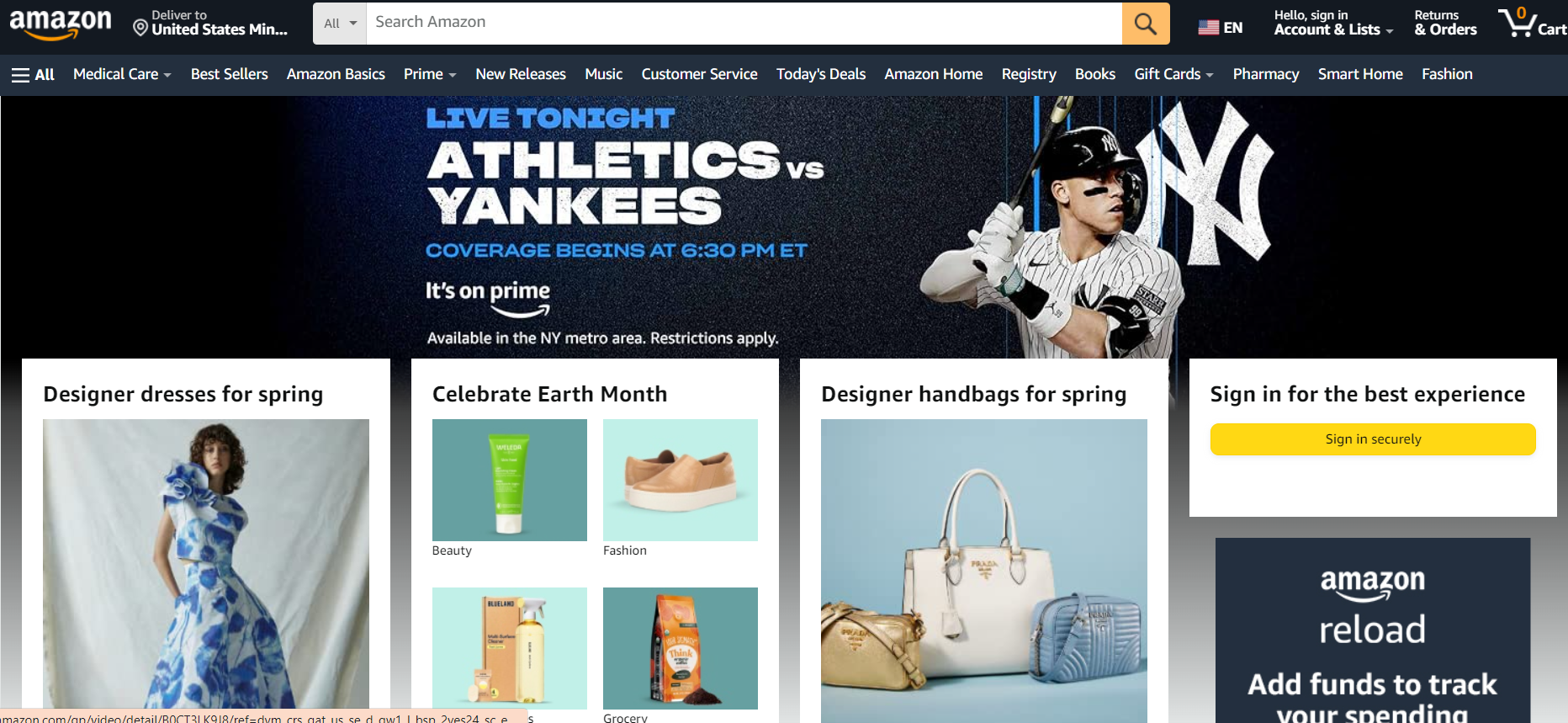
Amazon stands as one of the globe’s most significant and widely used online shopping venues. Jeff Bezos initiated this venture in 1994, initially setting it up as a digital bookstore. It rapidly broadened its inventory to encompass an extensive array of products, ranging from electronics and apparel to books, music, and beyond.
For those interested in digital dropshipping, Amazon is a treasure trove. The platform offers an extensive collection of digital products, like ebooks, online courses, software, music, and video content.
Also, when it comes to dropshipping books, here’s an intriguing fact about Amazon’s book sales: the company sells upwards of 300 million print books annually. It’s also estimated to hold a minimum of 40% market share in print book sales across the United States.
The pricing of their books spans from as low as $3 to as high as $800, catering to a wide budget range.
On the services front, Amazon’s Fulfillment by Amazon (FBA) program simplifies the logistics process for sellers. By shipping their inventory to Amazon’s fulfillment centers, sellers can have Amazon manage the storage, packaging, and delivery of their items.
Moreover, Amazon boasts integration capabilities with numerous other leading platforms, such as Shopify, Microsoft, Adobe, Red Hat, HubSpot, WooCommerce, and more, enhancing its utility and accessibility for a broad spectrum of users.
Udemy

Udemy is a leading online learning marketplace where instructors can create and sell courses on a wide variety of subjects. The platform is known for its vast user base, which provides a significant opportunity for course creators to reach students globally.
Thus, the pricing options start from free and is up to $360/year.
Udemy handles pricing and promotions, offering instructors a share of the revenue generated from their courses.
It’s an excellent starting point for educators looking to enter the e-learning space with minimal upfront investment.
Teachable
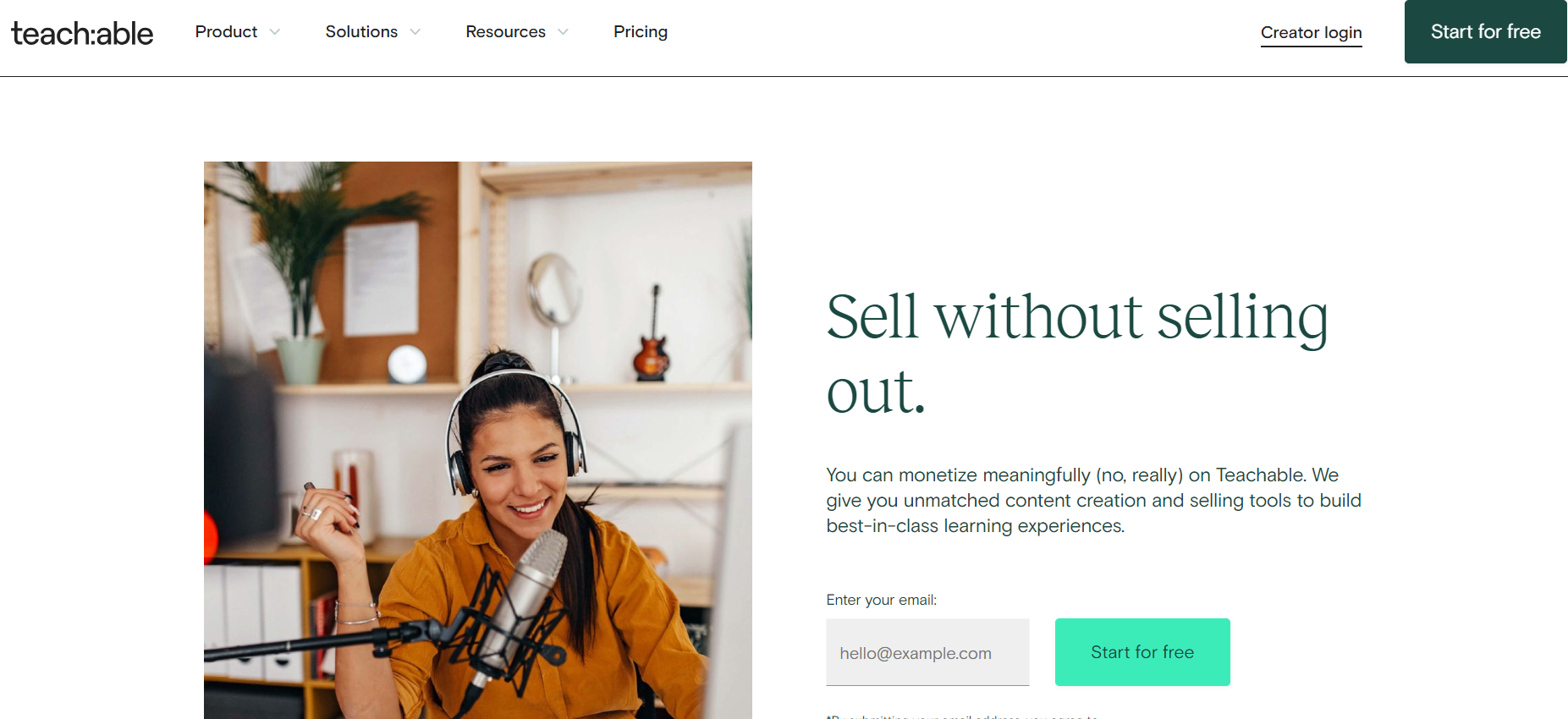
Teachable allows creators to offer online courses and coaching services under their brand. The platform offers a range of customization and marketing tools, enabling instructors to build a personalized teaching experience.
Teachable uses a subscription model, with plans varying in features and support levels to accommodate different sizes and types of educational endeavors. Thus, the platform has four pricing plans starting from $0/month, and is up to $199/month
This platform is ideal for educators and creators seeking more control over their online courses and student interactions.
Thinkific
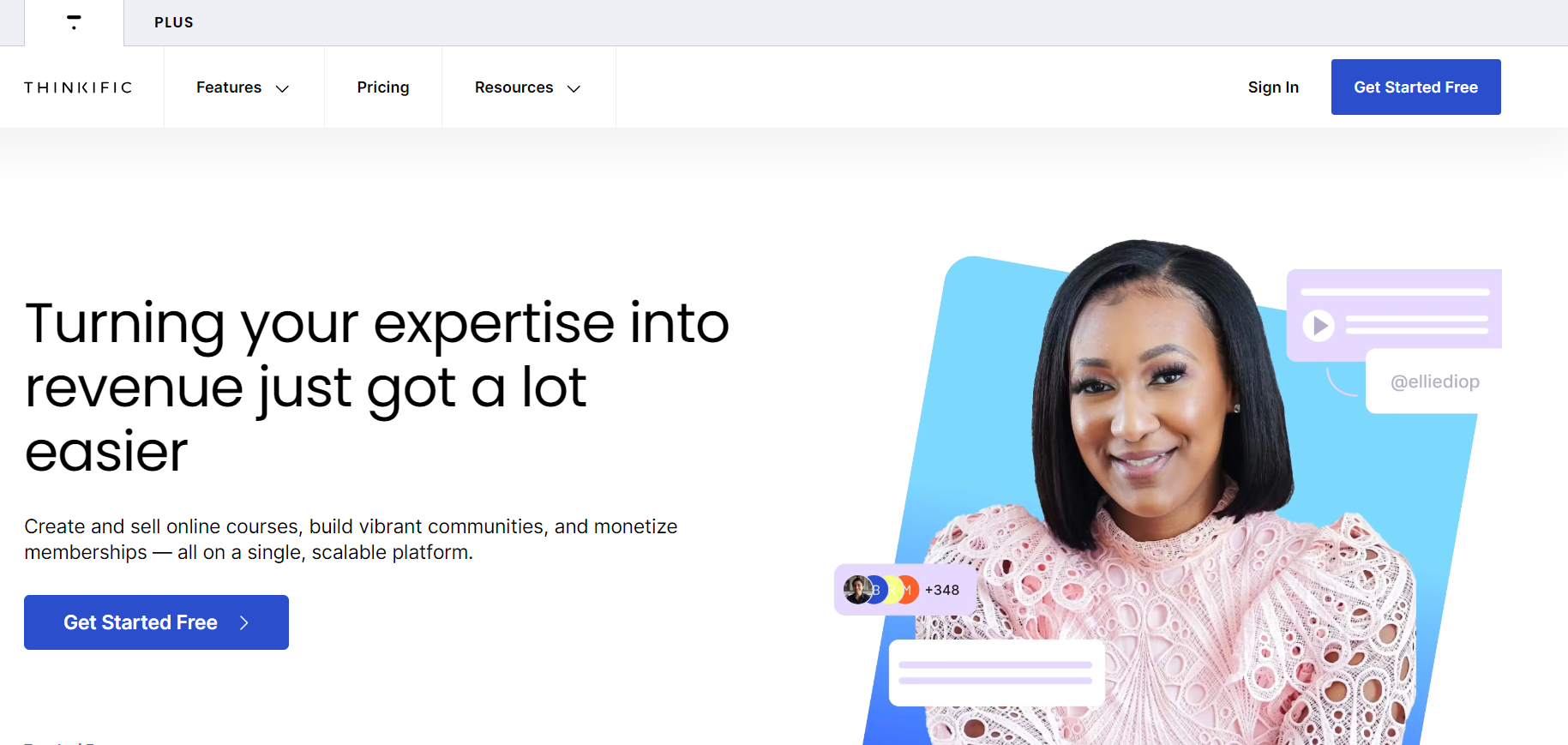
Thinkific provides a comprehensive suite of tools for creating, marketing, and selling online courses. It focuses on student engagement and content delivery, offering course creators a high degree of customization and control.
Like Teachable, Thinkific operates on a subscription basis, with four plans starting from $0/month up to $149/month.
Thinkific is suited for those looking to build a professional and engaging online learning environment.
Creative Market

Creative Market is a platform for selling graphic design templates, fonts, themes, photos, and more. It caters to designers and creatives seeking high-quality assets for their projects.
Sellers on Creative Market are charged a commission on sales, making it a flexible option for creatives at all levels of their career. Also, the platform offers five pricing options ranging from $9.95/month up to $99.95/month.
The platform is known for its high standard of quality and an engaged community of buyers.
Patreon
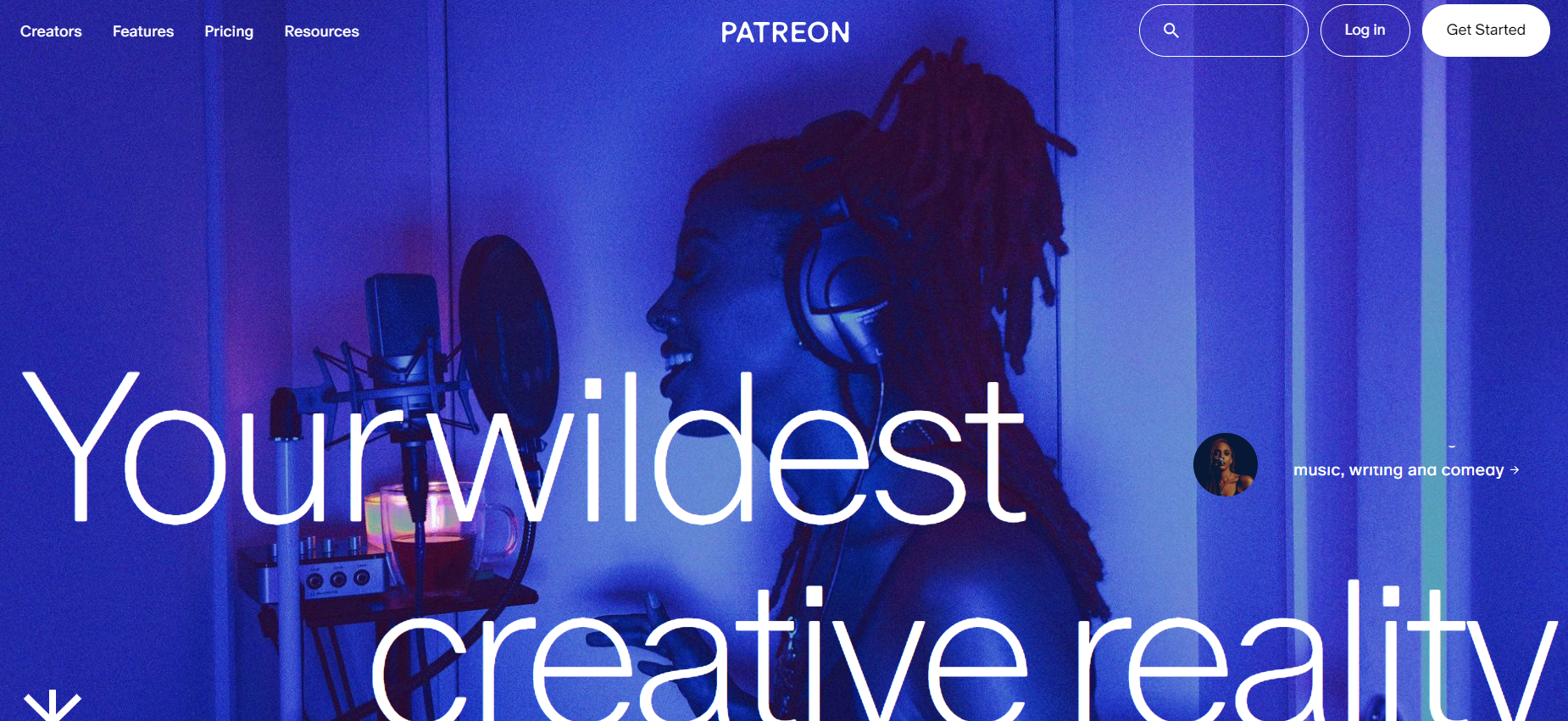
Patreon supports a subscription model that allows artists, writers, and creators to offer exclusive content to their audience.
By setting up membership tiers with various benefits, creators can offer exclusive content to their patrons.
Patreon takes a cut of the subscription revenue, making it an attractive option for creators looking to build a steady income stream from their dedicated followers.
This model fosters a direct relationship between creators and their supporters, encouraging a community-centric approach to content creation.
Creative Fabrica
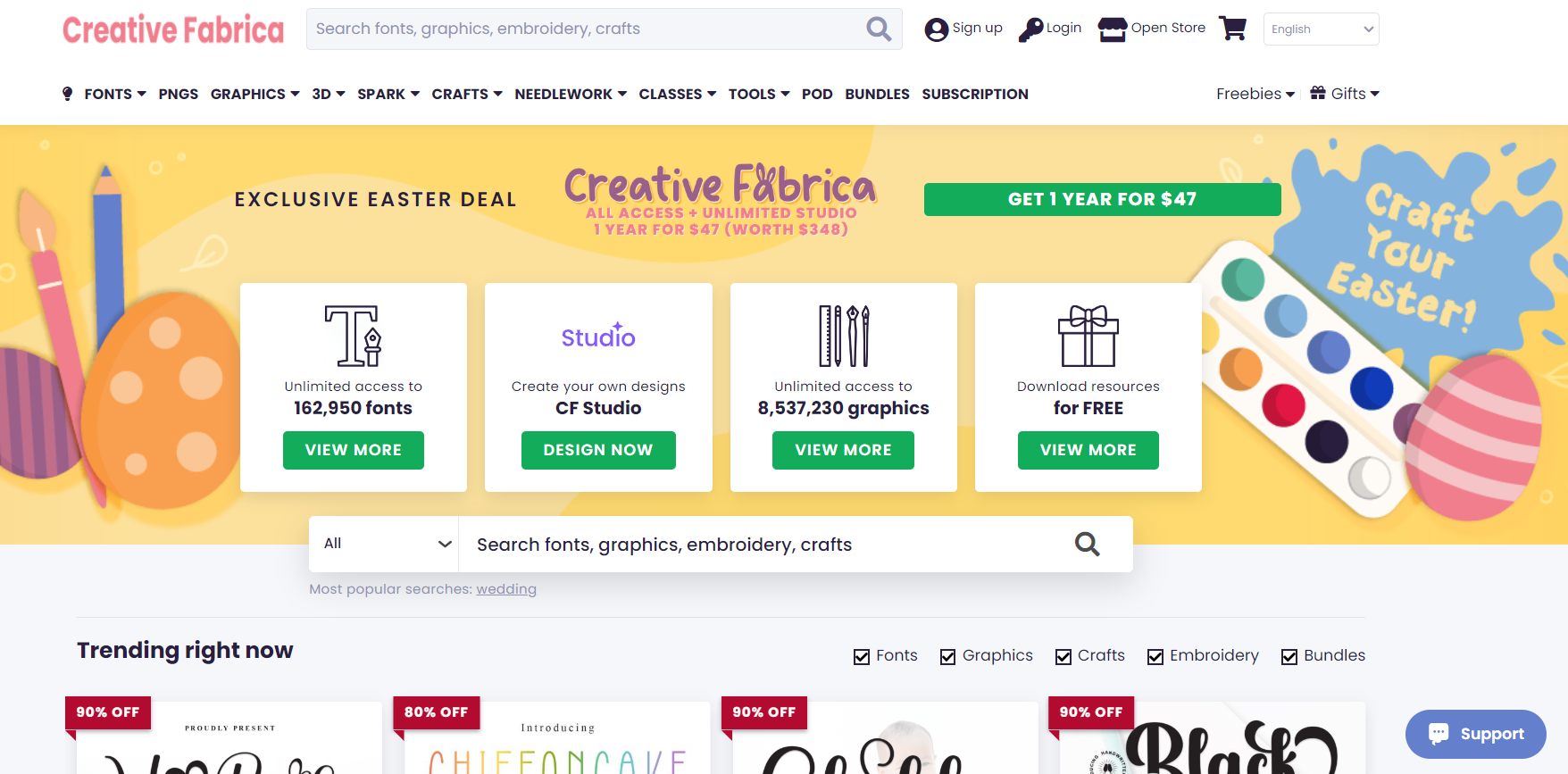
Creative Fabrica is an all-in-one digital marketplace offering nearly 9 million products from over 62,000 designers. It provides a vast array of fonts, graphics, and craft designs, along with over 1,400 courses covering various creative disciplines.
Also, one of their notable features include the Spark AI tools for generating creative content and the Studio for easy design editing.
Furthermore, the pricing options are flexible, with subscriptions like Crafts for $12 for 3 months, Fonts for $19 per month, Graphics for $19 per month, and All Access for $29 per month, all including commercial licenses for unlimited use.
Best Digital Products To Dropship in 2024
Dropshipping digital products offers an attractive avenue for entrepreneurs looking to capitalize on the digital revolution.
Unlike tangible goods, these products boast several benefits, including unlimited stock from a single creation, zero shipping costs, and the ability to provide instant gratification to customers through immediate delivery.
So, let’s see which are the best-selling digital dropshipping products today!
eBooks

eBooks are incredibly versatile, catering to a vast range of interests from fiction to self-help, making them a prime candidate for dropshipping.
The cost of creating an eBook can be virtually nothing if you author the content yourself, but can rise to over a thousand dollars if you enlist professional help for writing, editing, and cover design.
These digital books are typically sold for between $2.99 and $9.99 on platforms like Amazon Kindle Direct Publishing, although specialized or technical content might fetch higher prices.
The profit margins for eBooks can be exceedingly high, often reaching 70-95%, especially if you’re the creator or have secured perpetual selling rights.
This makes eBooks, ranging from cookbooks to technical manuals, an excellent option for dropshipping. Also, based on Google Trends, ebooks are one of the best-sellers of digital dropshipping products.

Audiobooks

Following eBooks, audiobooks represent another growing market segment, appealing to those who prefer listening over reading, whether they’re on the move or relaxing at home.
The production cost of audiobooks varies, starting from around $500 to $3,000, depending on the book’s length and whether professional voice actors are employed.
Retail prices for audiobooks usually range from $10 to $20, offering healthy profit margins of 50-75% once the initial production costs are recouped.
From narrated novels to educational content, audiobooks hold a significant dropshipping appeal. And, based on Google Trends results, they are in high demand.

Courses

The demand for online courses has exploded, covering topics as varied as digital marketing and personal development. Creating a course can cost from a few hundred dollars to several thousand, depending on the production value and whether you do it yourself or hire professionals.
Courses can sell for anything from $10 to $2,000, based on their niche, complexity, and length. They typically enjoy high-profit margins of 50-90%, particularly if they incur low ongoing costs.
With such broad appeal and potential for profit, online courses are a standout choice for dropshipping.
For instance, let’s check on the demand for online courses for graphic design on Google Trends. Thus, as I can see, these ones are in high demand.
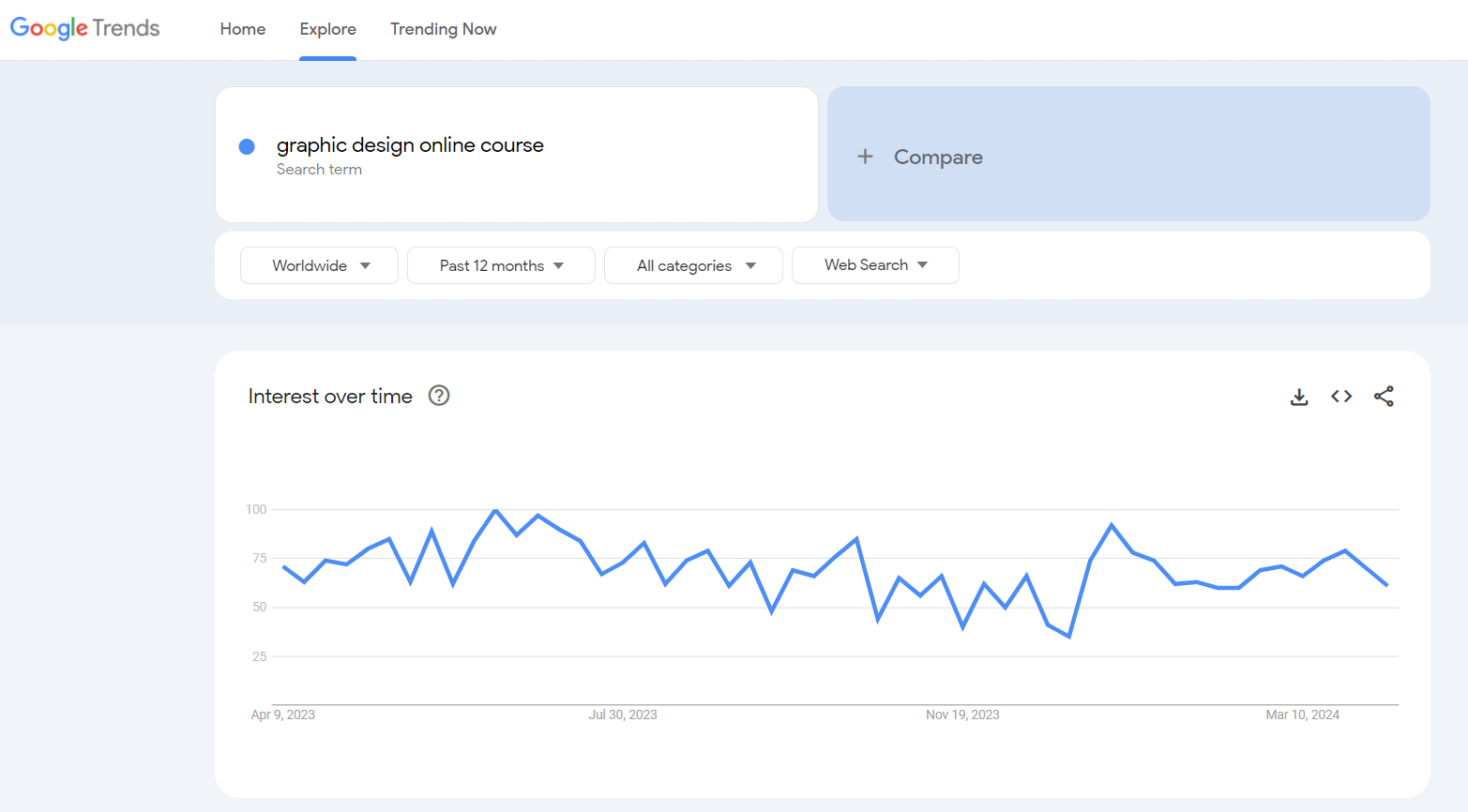
Moreover, I find the DSCOM hub very inspiring for how my course should look like. So, I recommend you check it out.
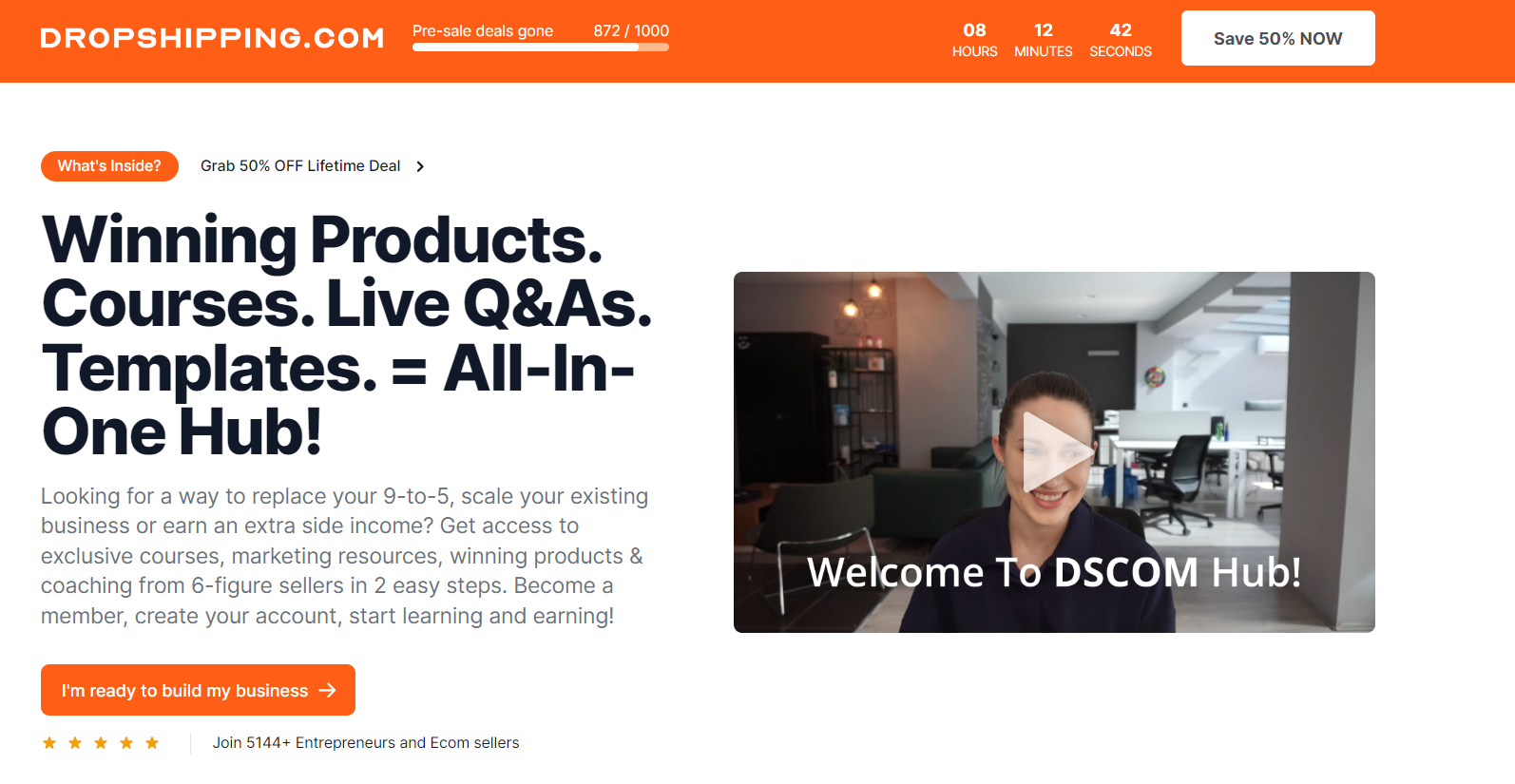
Video Games
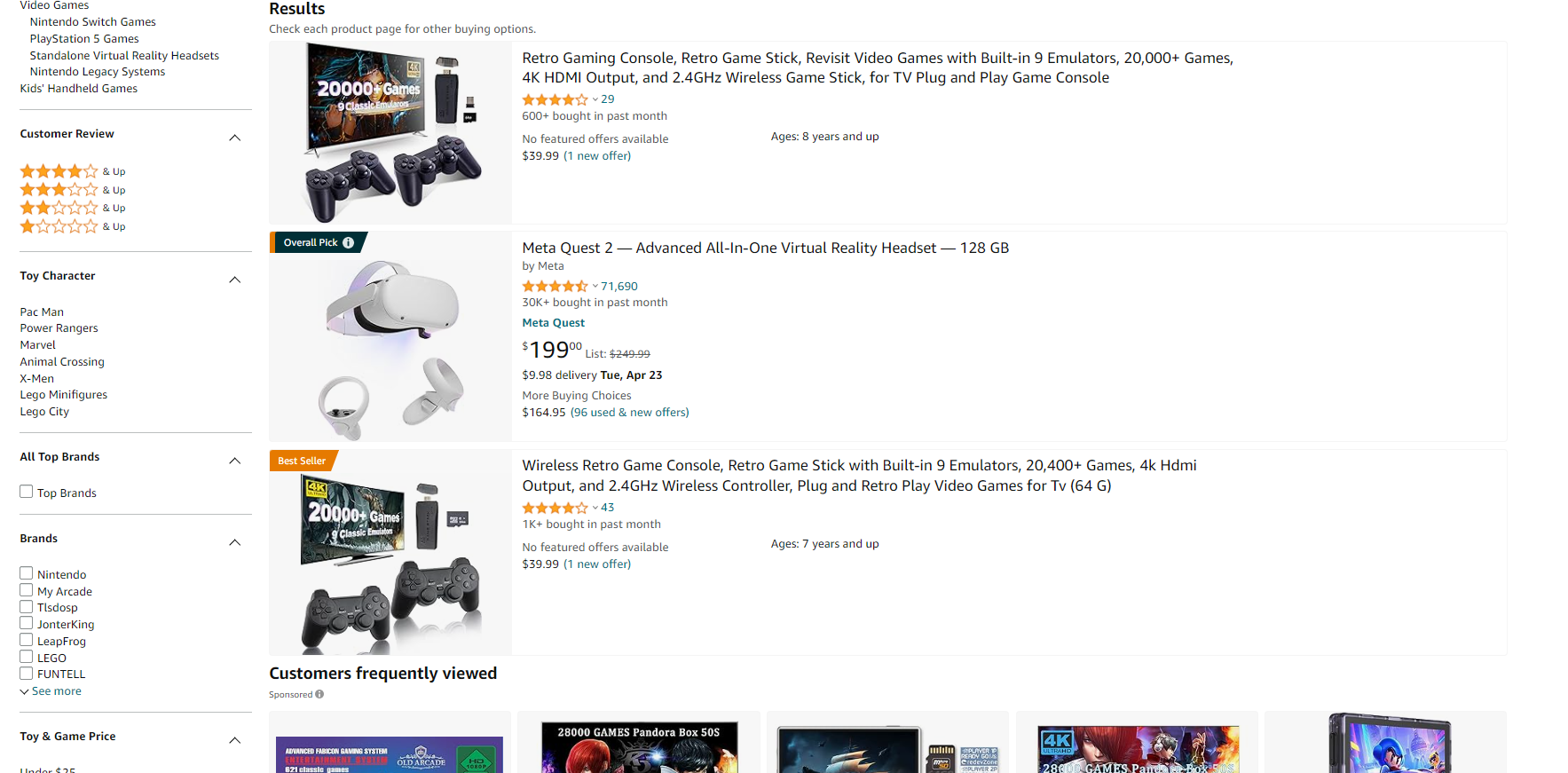
The video game industry has largely moved towards digital distribution, a trend that aligns perfectly with the dropshipping model. Costs associated with selling video games digitally include licensing fees, which can vary greatly.
Retail prices for new titles range from $20 to $60, with special editions and in-game purchases offering additional revenue streams.
Profit margins in the video game sector can vary but often fall within the 30-70% range, depending on the specifics of publisher agreements.
Indie games and expansion packs represent just a fraction of what can be offered through dropshipping. Also, I just checked out the Google Trends results of demand for FIFA video games, and it seems like it has no signs of stopping.
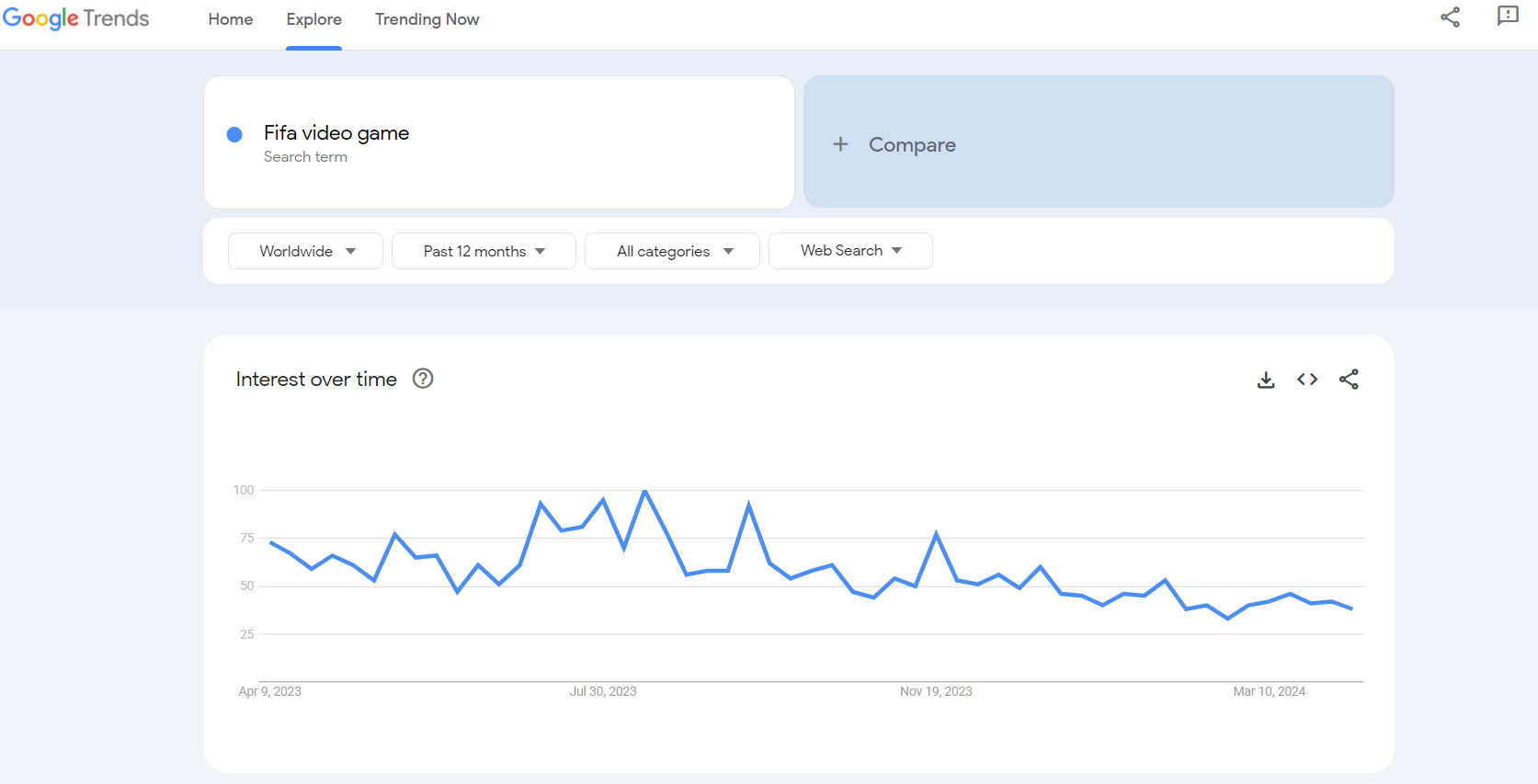
💡 Tip: Learn about Video Games Dropshipping – How to Launch Your Gaming Business? [Tips, Suppliers & Product Ideas].
Plugins and Extensions
Digital tools that enhance the functionality of websites and software, such as plugins and extensions, cater to a technically inclined audience.
Development costs can be minimal if you’re the developer or can scale up depending on the complexity of the plugin and the reputation of the hired developer.
These products can be sold for anywhere from $5 to several hundred dollars, boasting profit margins of 70-90%. The appeal of customizing one’s digital experience makes plugins and extensions particularly attractive for dropshipping.
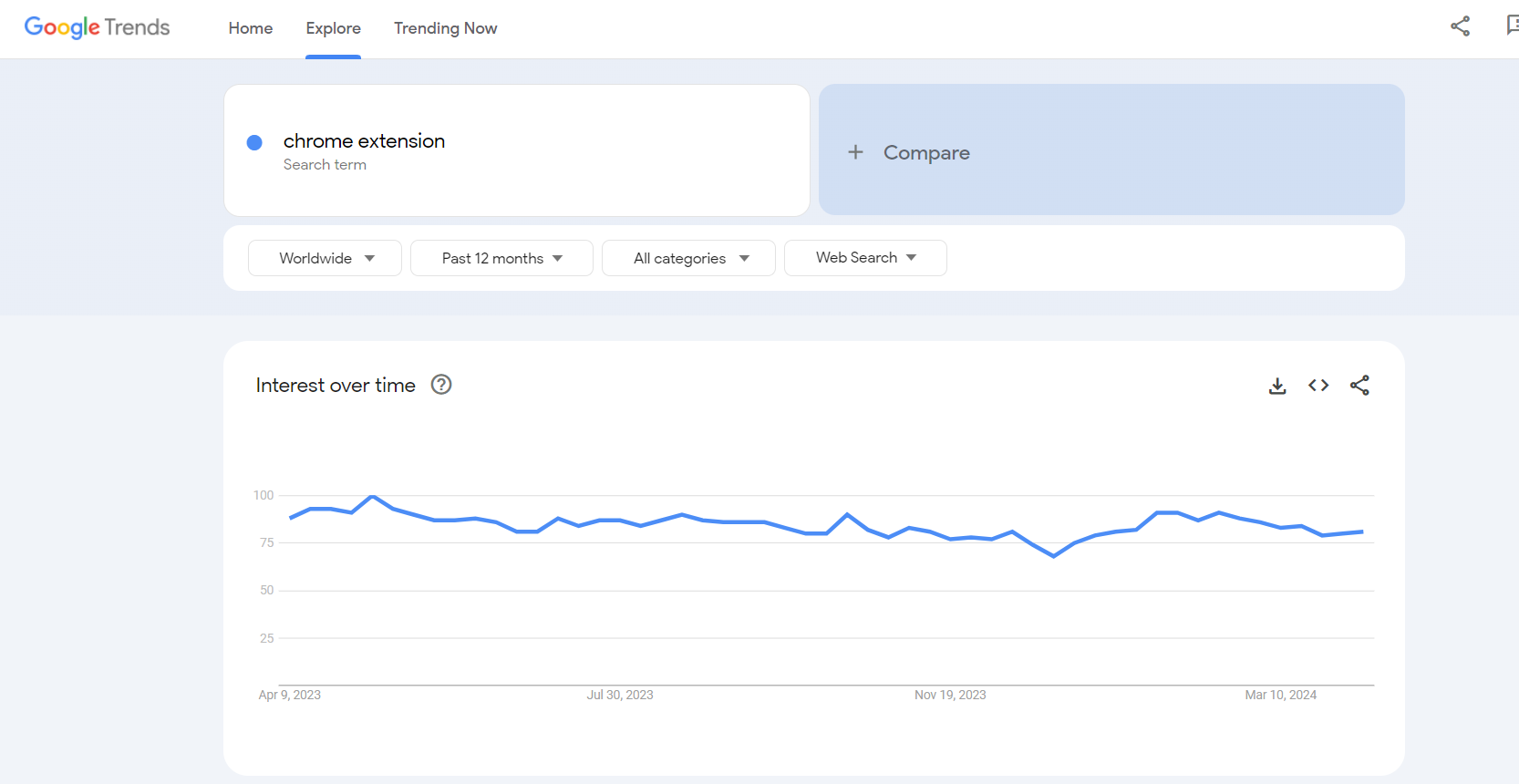
Graphic Design and Digital Art

The market for digital art and graphic design, including logos, website templates, and custom artwork, is vast and varied.
Whether created personally or outsourced, the cost to produce these works can range significantly. Simple designs might cost as little as $10, while intricate artworks or highly professional designs can command thousands.
With retail prices spanning from a few dollars to several hundred or even thousands for custom pieces, the profit margins are notably high, around 70-95%.
This wide range of potential products and prices makes digital art and graphic design an excellent choice for those looking to dropship digital products.

Real Life Examples Of Dropshipping Digital Products
Now, I will share with you the most inspiring stories about dropshippers who started selling digital products. So, read on and get inspiration.
The Success Story of Dan: Innovating Digital Product Sales
Dan has successfully leveraged his unique approach and personal brand to amass over $5 million from selling digital products on his website, steering clear of mainstream platforms. His strategy diverged from conventional online business advice, combining seemingly unrelated niches like philosophy, spirituality, fitness, business, and writing to create a distinctive niche.
With a robust following on social media, particularly Instagram, Dan has fostered a community akin to a cult, offering content that stands out in a crowded digital space. His engagement with his audience is personal and inspiring, demonstrated by his gesture of sending a physical copy of his book with a personal note.
Dan champions a radical perspective on society and entrepreneurship, encouraging a proactive stance towards life and business. He emphasizes experimentation and resilience, traits that fueled his diverse entrepreneurial endeavors, from fitness coaching to social media marketing.
Despite challenges, including concerns about privacy and the risks associated with his new venture into productivity software, Dan’s journey exemplifies the power of innovation, community building, and the relentless pursuit of one’s passions.
Madeline’s Path to $1,000 Through Digital Products on Etsy
When Madeline began her journey, she was simply a blogger with a vision but no clear product direction. Intrigued by the potential of selling digital products like PDFs, ebooks, or printables, she faced the daunting question of what exactly to sell. Riddled with doubts about her own legitimacy as a seller, Madeline’s initial steps were filled with uncertainty.
Overcoming Initial Doubts
Despite her initial low confidence and fears of inadequacy, Madeline learned that confidence is fostered through action and observing tangible results. This understanding helped her transition from questioning who would buy from her to bravely stepping into the realm of selling.
Madeline’s First Successful Freebie
The turning point for Madeline was her Instagram followers’ curiosity about how she edited her photos. She decided to share one of her Lightroom presets for free, a move that required recipients to sign up for her email list—a strategy underscored by the importance of building an engaged email audience. Promoting this free preset across platforms like Pinterest and YouTube, Madeline saw over 50,000 downloads, significantly bolstering her email list.
From Freebie to First Sales on Etsy
Encouraged by the enthusiastic response to her free preset, Madeline resolved to sell additional presets on Etsy. Despite battling initial reservations and limiting beliefs, she launched her Etsy shop. The first month’s earnings of approximately $360 affirmed to Madeline that selling digital products was not only feasible but also scalable.
Creating a Funnel System for Passive Sales
Madeline’s venture into understanding and implementing sales funnels transformed her business, enabling her to earn passively. This system, guiding people from discovery to purchase, played a pivotal role in achieving her first $1,000. Madeline continued to refine and apply this strategy for her subsequent product launches.
Launching the Simple Passive Plan Course
To disseminate her acquired knowledge, Madeline launched the Simple Passive Plan course, aimed at demystifying the process of creating and selling digital products for passive income. This course encapsulates Madeline’s journey and strategies in an accessible, step-by-step plan.
Madeline’s Success Story of Her First $1,000 on Etsy
Address and overcome the limiting beliefs that can hinder starting. Choose a digital product to sell, leveraging unique skills and market demand. Confirm there’s a market for your product through research. Decide on your product’s price point, reflecting its value and market rates.
Utilize freebies to attract traffic and funnel potential customers towards your paid products, establishing a system for passive sales.
Through her journey, Madeline discovered the importance of taking action despite doubts, the power of a well-structured sales funnel, and the necessity of persistently refining and promoting digital products.
If you’re contemplating this path, Madeline’s story illustrates that starting small, staying consistent, and being strategic can lead your digital product business to flourish.
Digital Dropshipping FAQs
1. How do you handle customer support and refunds for digital products?
Handling customer support and refunds for digital products requires a clear, fair, and transparent approach. Since digital products, once delivered, cannot be physically returned, establishing a straightforward refund policy is crucial.
This policy should outline under what circumstances refunds will be granted, such as non-delivery or significant discrepancy between the product’s description and its actual content.
For customer support, offering multiple channels like email, chat, and FAQ sections can help address issues quickly and efficiently. It’s important to respond promptly to customer inquiries and complaints, maintaining a positive relationship and trust with your clientele. Moreover, using software tools to track customer interactions can ensure that no query goes unanswered and helps in resolving issues more effectively.
2. What are the legal considerations when dropshipping digital products?
When dropshipping digital products, several legal considerations need to be taken into account to protect your business and comply with the law.
Intellectual property rights are at the forefront; ensuring that you have the right to sell digital goods is essential. This means either creating the products yourself or obtaining the necessary licenses from the copyright owner.
Additionally, you must be aware of and comply with digital copyright laws in the territories you operate. Privacy laws, such as the GDPR in Europe, also require attention, especially in how you handle customer data.
It’s recommended to draft clear terms of service and privacy policies for your website, detailing how you collect, use, and protect customer information. Consulting with a legal professional who specializes in digital commerce can provide tailored advice and help you navigate these complex areas.
3. How do you ensure the security of digital products against piracy and unauthorized sharing?
Securing digital products against piracy and unauthorized sharing involves implementing technical and legal measures. On the technical side, using digital rights management (DRM) software can help restrict how content can be copied, shared, or accessed.
Watermarking digital products is another method, where a unique identifier is embedded in the product, making it easier to trace unauthorized distributions.
From a legal perspective, having a strong and enforceable end-user license agreement (EULA) that clearly states the permissible uses of your digital products is vital. This agreement should detail the legal repercussions for unauthorized sharing or piracy.
Educating customers about the value of purchasing from legitimate sources and the efforts taken to create digital products can also foster respect for intellectual property rights and discourage piracy.


Conclusion
Wrapping up, and diving into digital dropshipping is more than just following a trend; it’s about embracing a smarter, more efficient way to do business.
My take? It’s a game-changer. The benefits are clear: low startup costs, no physical inventory, instant delivery, and a global reach. But, like any venture, it requires thought and strategy.
Before jumping in, consider your niche, understand the digital landscape, and, most importantly, know your audience. Digital products offer unparalleled convenience and value, but succeeding means offering something unique and valuable.
My advice? Start with passion, proceed with research, and always aim to provide real solutions. Digital dropshipping isn’t just selling; it’s about creating meaningful connections through products that matter. Ready to make your mark? Let’s make digital the new standard.













![The Top 21 3PL Companies Compared [2024 List & Guide]](https://images.weserv.nl/?url=https://prod-dropshipping-s3.s3.fr-par.scw.cloud/2024/03/Frame-3922469.jpg&w=420&q=90&output=webp)